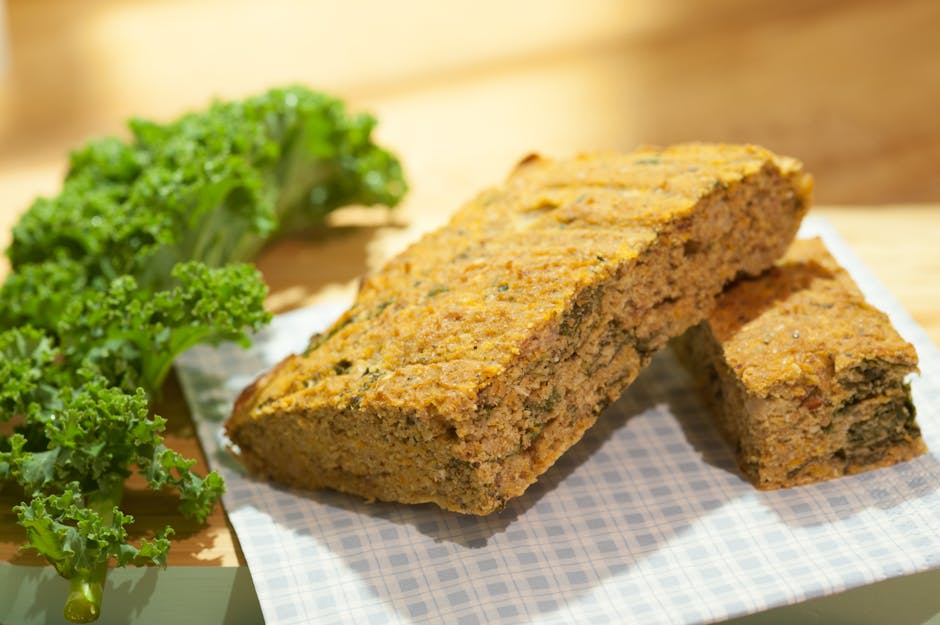Craving delicious cakes, breads, and desserts but avoiding gluten and dairy? Master gluten-free vegan baking and unlock a world of culinary possibilities! This guide will take you beyond wheat and dairy, providing the knowledge and recipes you need to create amazing treats that everyone can enjoy. Get ready to embark on a flavorful journey into the world of gluten-free vegan baking, transforming your kitchen into a haven for allergy-friendly and plant-based delights. Say goodbye to limitations and hello to a new era of baking innovation!
Understanding Gluten-Free Vegan Baking
Gluten-free vegan baking combines the challenges of both gluten-free and vegan baking. It means excluding wheat, barley, rye, and any ingredients derived from animals, such as eggs, dairy, and honey. This requires a deep understanding of ingredient substitutions and their impact on texture, flavor, and structure. Common gluten-free flours include rice flour, almond flour, tapioca flour, and potato starch. Egg replacements can include flax eggs, chia eggs, applesauce, or commercial egg replacers. Dairy-free milk alternatives such as almond milk, soy milk, or oat milk are crucial. Sweeteners like maple syrup, agave, or coconut sugar replace honey. Getting the right balance of these ingredients is key to successful gluten-free vegan baking. For example, using too much almond flour can result in a dense, heavy texture, while too much tapioca starch can create a gummy result. Experimentation is your friend!
Exploring Gluten-Free Flour Blends
One of the biggest hurdles in gluten-free vegan baking is finding the right flour or flour blend. A single gluten-free flour rarely provides the same results as wheat flour. That’s why creating a blend is often necessary to achieve the desired texture. Consider the following:
- All-Purpose Gluten-Free Flour Blends: These are pre-made blends designed to mimic all-purpose wheat flour. They usually contain a mix of rice flour, tapioca starch, and potato starch, along with a gum (like xanthan gum or guar gum) to provide structure.
- Rice Flour: Provides a neutral flavor and a slightly grainy texture. Brown rice flour is more nutritious but can be heavier.
- Almond Flour: Adds moisture and a nutty flavor. It’s best used in combination with other flours as it can be quite dense.
- Tapioca Starch: Contributes to chewiness and helps bind ingredients.
- Potato Starch: Creates a light and airy texture.
- Oat Flour: Adds a slightly sweet flavor and a soft texture. Make sure to use certified gluten-free oat flour.
Experiment with different ratios to find the perfect blend for your specific recipe. Remember, the best gluten-free vegan baking recipes often rely on a thoughtful combination of various flours and starches.
Real-World Applications and Benefits of Vegan Gluten-Free Baking
Gluten-free vegan baking opens up a world of possibilities for individuals with dietary restrictions or ethical preferences. Here are some real-world applications:
- Allergies and Intolerances: Perfect for people with celiac disease, gluten sensitivity, dairy allergies, or lactose intolerance.
- Vegan Lifestyle: Provides delicious and ethical alternatives to traditional baked goods.
- Healthier Options: Gluten-free vegan recipes often use whole grains and natural sweeteners, making them a healthier choice.
- Inclusive Gatherings: Allows you to create desserts and treats that everyone can enjoy, regardless of their dietary needs.
Consider these use-case examples:
- Birthday Cake: Create a stunning gluten-free vegan chocolate cake for a child with celiac disease and a dairy allergy.
- Holiday Cookies: Bake a batch of gluten-free vegan gingerbread cookies for a festive and inclusive holiday celebration.
- Breakfast Muffins: Prepare gluten-free vegan blueberry muffins for a quick and healthy breakfast option.
Challenges and Limitations
While gluten-free vegan baking offers many benefits, it also presents some challenges:
- Texture: Achieving the right texture can be tricky. Gluten provides structure and elasticity, while dairy and eggs contribute to moisture and binding. Replicating these qualities with alternative ingredients requires careful experimentation.
- Cost: Gluten-free flours and vegan substitutes can be more expensive than traditional ingredients.
- Availability: Some specialized ingredients may not be readily available in all areas.
- Recipe Development: Converting traditional recipes to gluten-free vegan versions often requires significant adjustments and multiple attempts.
It’s essential to be patient and persistent. Don’t be discouraged by initial failures; learn from your mistakes and keep experimenting until you achieve the desired results.
Recommendations and Future Outlook
For successful gluten-free vegan baking, here are some recommendations:
- Start with Reliable Recipes: Begin with well-tested recipes from reputable sources.
- Measure Accurately: Precise measurements are crucial for consistent results.
- Don’t Overmix: Overmixing can develop gluten (in traditional baking) and lead to tough baked goods. While this isn’t an issue in gluten-free baking, overmixing can still negatively affect the texture.
- Use a Kitchen Scale: Weighing ingredients is more accurate than measuring by volume.
- Experiment and Adapt: Don’t be afraid to adjust recipes to suit your preferences and the ingredients you have on hand.

The future of gluten-free vegan baking is bright. As demand for allergy-friendly and plant-based options continues to grow, we can expect to see even more innovative ingredients and recipes emerge. Increased availability of specialized ingredients, along with advances in baking techniques, will make it easier than ever to create delicious and satisfying gluten-free vegan baked goods. Master gluten-free vegan baking by understanding core concepts, experimenting with flour blends, and focusing on texture and flavor. With a little practice, you’ll be able to bake amazing cakes, breads, and more that everyone will love!
